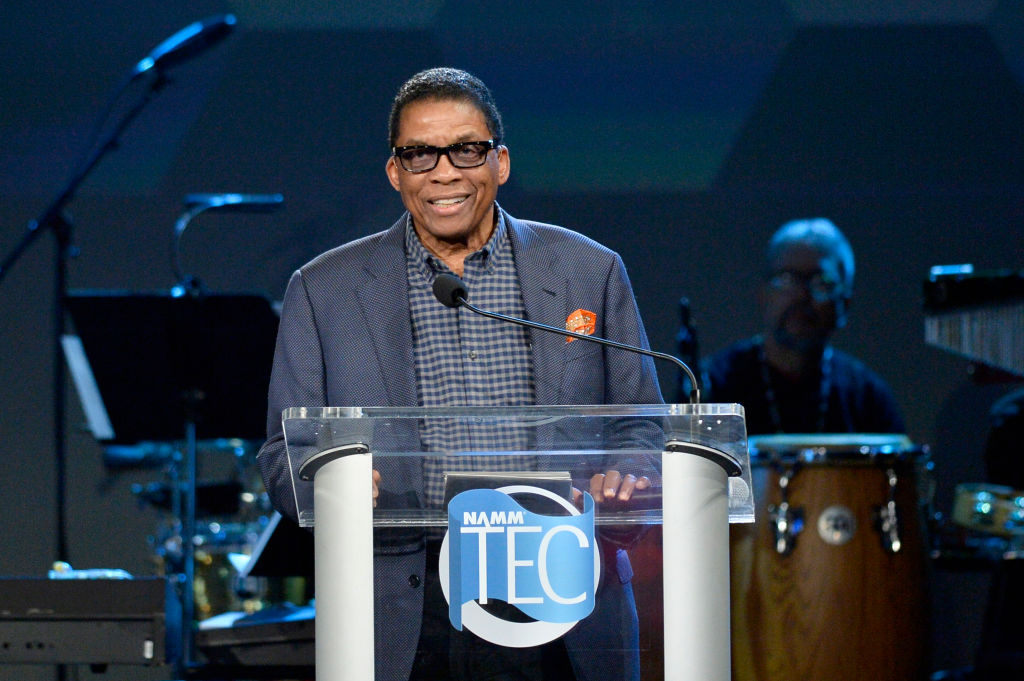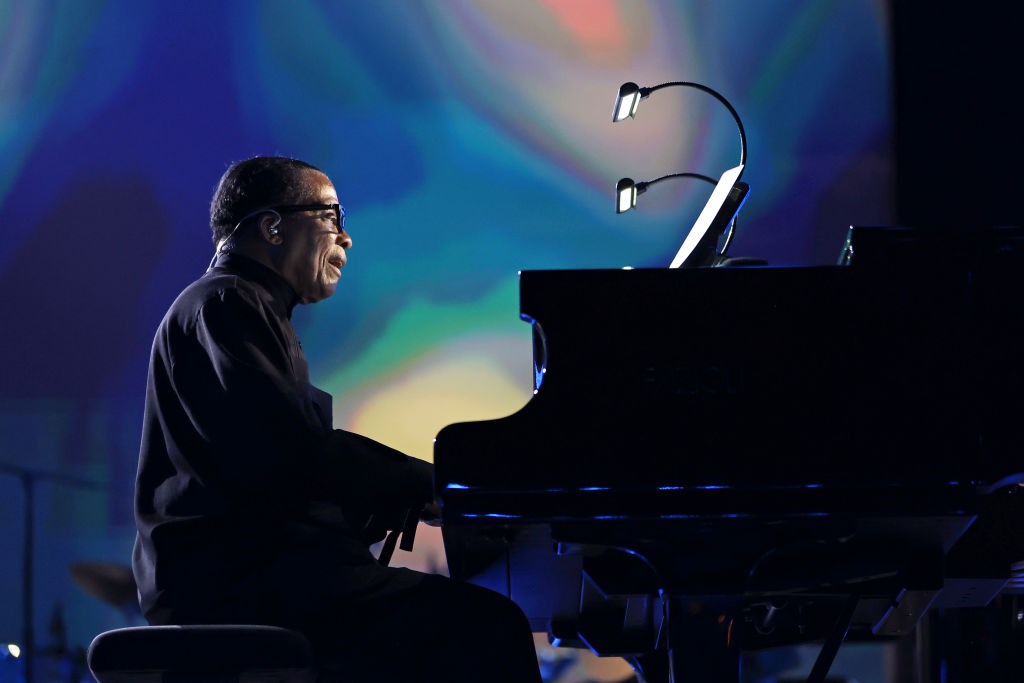The future of fusion is funk: 50 years of Herbie Hancock’s ‘Head Hunters’
TheGrio examines how Herbie Hancock’s “Head Hunters” album signaled a funky turn in so-called jazz music and stood out from […] The post The future of fusion is funk: 50 years of Herbie Hancock’s ‘Head Hunters’ appeared first on TheGrio.

TheGrio examines how Herbie Hancock’s “Head Hunters” album signaled a funky turn in so-called jazz music and stood out from the big name fusion bands of the time.
In 1969, Miles Davis released his album, “In a Silent Way.” While he had already slowly started incorporating electric instrumentation into his work a couple of years before, “In a Silent Way” set the tone for a new movement in so-called jazz that came to be known as fusion.
Several of his sidemen on that album formed their bands and furthered the charge of fusion after Davis continued to define the sound with albums like “Bitches Brew” and “Jack Johnson.” Guitarist John McLaughlin led the Mahavishnu Orchestra, keyboardist Chick Corea founded Return to Forever, and saxophonist Wayne Shorter teamed up with pianist Joe Zawinul to create Weather Report.
Then there’s Herbie Hancock, one of the anchors of Davis’ iconic second quintet with Shorter, Ron Carter, and Tony Williams. Together, they’d altered the face of so-called jazz and revealed compositional possibilities never conceived. Hancock, one of the most prodigious pianists ever, took the adventurous, untethered tutelage he got from Davis and applied it to his own albums and compositions, which tended to be on the more soulful end of the spectrum.

By 1973, Mahavishnu Orchestra, Return to Forever, and Weather Report were already releasing albums and touring the world. Hancock was fresh off a three-album run with his own fusion band, Mwandishi. That sextet allowed him to experiment with ambient melodies and electronic sonic tapestries. But Hancock wanted to make people dance, and he did so with his 12th studio album, “Head Hunters,” released on Oct. 26, 1973.
The collective of Hancock, percussionist Bill Summers, drummer Harvey Mason, saxophonist Bennie Maupin, and bassist Paul Jackson proved formidable. With Hancock and David Rubinson in the producer chairs, “Head Hunters” differed from jazz records at the time.
Each big fusion band was distinct in style, compositional approaches, and instrumental attacks, as influenced by their respective leaders. The Mahavishnu Orchestra’s music was heavy and psychedelic. Return To Forever recorded esoteric and mystical records. Weather Report went to accessible yet intellectual places. Hancock separated himself from the pack with a key ingredient the other groups hadn’t fully harnessed: funk.
Hancock dabbled with funky music during his brief tenure at Warner Brothers, starting with 1969’s “Fat Albert Rotunda.” His Mwandishi band only offers passing references to funk with songs like “Sleeping Giant” and “Hornets.” “Head Hunters” saw Hancock fully commit to the muse of funk.
Within the first two bars of the album opener, “Chameleon,” it became clear that Hancock was aiming for a new audience. The unrelenting walking bass riff played by Hancock on the synthesizer is a mission statement for the entire album. His cohorts fill in the blanks around him with their brilliant musicianship and deep understanding of pocket-playing, creating instantly iconic brass melody lines and unique places for improvisational exploration.
Like his ex-boss, Davis, Hancock was paying attention to the progressive Black music surrounding him then. In particular, James Brown and Sly and the Family Stone dramatically affected Black music in the late 1960s and early 1970s. The new syncopation techniques defined the funk movement, while groups like Funkadelic pushed the envelope of Afrofuturism in popular Black music.
Hancock addresses the influence by naming one of the album’s tracks “Sly.” The song’s slithering, mysterious intro acted as a red herring for what turned out to be a furious jam worthy of its Oakland namesake, accentuated by Maupin’s soloing. Hancock retooled one of his older compositions, “Watermelon Man,” from an accessible pop-jazz ditty to a tribal, voyeuristic experience.
Although the bass riff from “Chameleon” acted as the melodic and rhythmic mission statement for “Head Hunters,” the album’s closer, “Vein Melter,” was a reminder of what these gentlemen had assembled to do. By far the slowest-paced track on the album, “Vein Melter,” was the much-needed comedown from a body-moving exhibition, but illustrated an understanding of the sensual atmosphere required to balance out a record such as this.
“Head Hunters” became a smash album, peaking at No. 13 on the Billboard 200 Album charts, still standing as the highest peak of his career on that chart. “Chameleon” became Hancock’s first of two entries on the Billboard Hot 100.
With such success, Hancock took the studio band on the road with him, with drummer Mike Clark replacing Mason. With Clark, a close friend of Jackson’s, in tow, the band went off and running, catching up with their fusion counterparts who already had a two-to-three-year head start. Hancock’s Head Hunters band distinctively had the Blackest sound of any big fusion band, remaining grounded and gritty on the surface despite being complex and swelling at its core.
Hancock continued this funky phase with the follow-up albums “Thrust (1974),” “Man-Child (1975),” and a live album “Flood (1975),” with the lineup of Maupin, Summers, Clark, and Jackson. Even after Hancock moved onto new frontiers, the funk became too much to ignore. The band went on without Hancock as The Head Hunters and remains active today.
“Head Hunters” proved a revolutionary album. While artists like Davis, Donald Byrd, Freddie Hubbard, Tony Williams, and others incorporated R&B and funk into their sound before “Head Hunters,” Hancock and the band codified the movement with his landmark statement. It provided a pathway for groups like the Billy Cobham – George Duke Band, Donald Byrd’s Blackbyrds, Roy Ayers Ubiquity, Grover Washington Jr., and others to thrive.
The album spanned generations and regions throughout history. You can hear rappers from Spoonie Gee to DJ Quik sampling songs “Chameleon” and “Watermelon Man” while also catching bar bands riff on “Chameleon” on just the right Friday and Saturday nights. Current innovators like Robert Glasper, Thundercat, Jason Moran, and others owe a debt to Hancock, “Head Hunters,” and The Head Hunters.

Matthew Allen is an entertainment writer of music and culture for theGrio. He is an award-winning music journalist, TV producer and director based in Brooklyn, NY. He’s interviewed the likes of Quincy Jones, Jill Scott, Smokey Robinson and more for publications such as Ebony, Jet, The Root, Village Voice, Wax Poetics, Revive Music, Okayplayer, and Soulhead. His video work can be seen on PBS/All Arts, Brooklyn Free Speech TV and BRIC TV.
TheGrio is FREE on your TV via Apple TV, Amazon Fire, Roku and Android TV. Also, please download theGrio mobile apps today!
The post The future of fusion is funk: 50 years of Herbie Hancock’s ‘Head Hunters’ appeared first on TheGrio.












